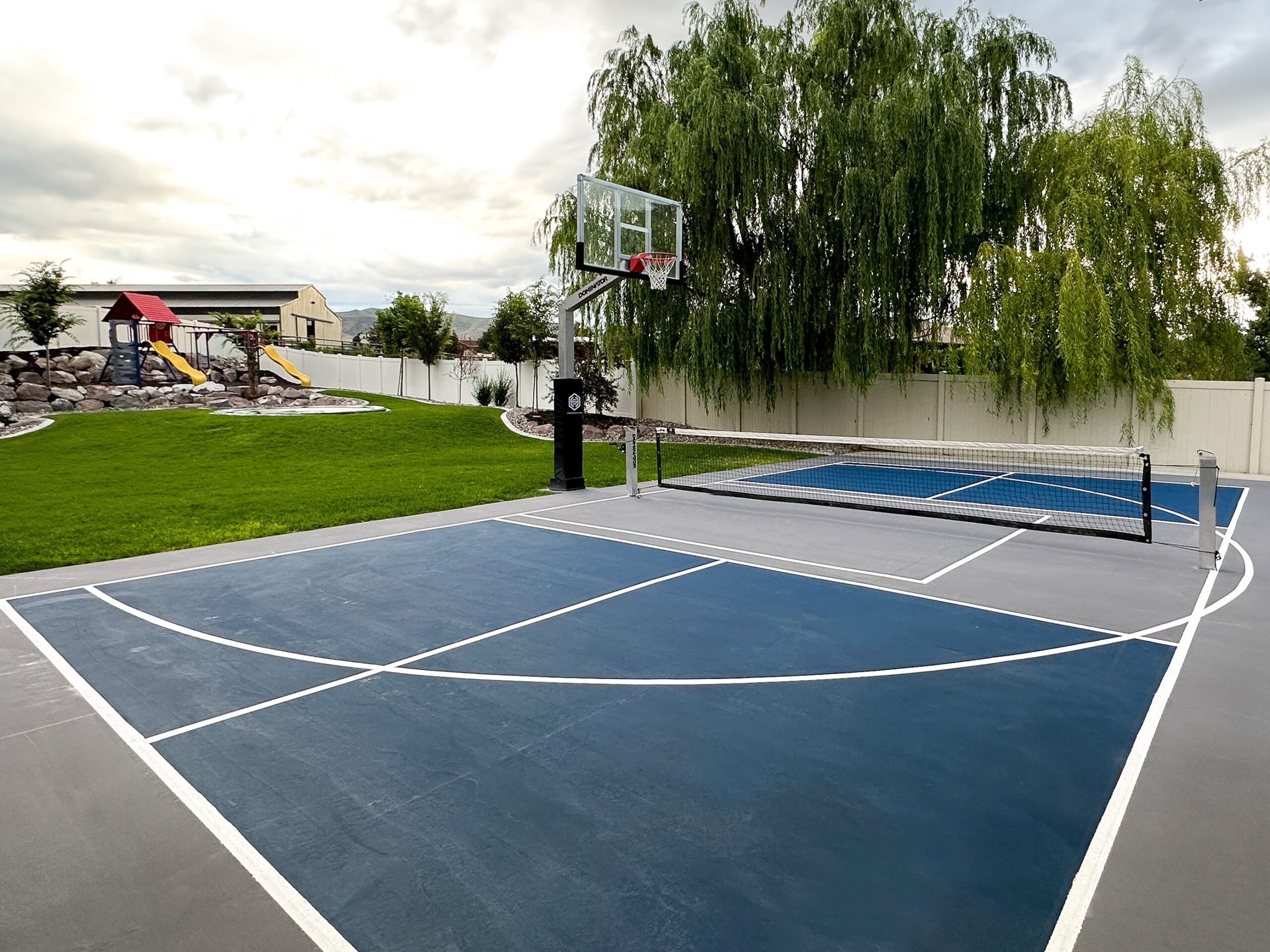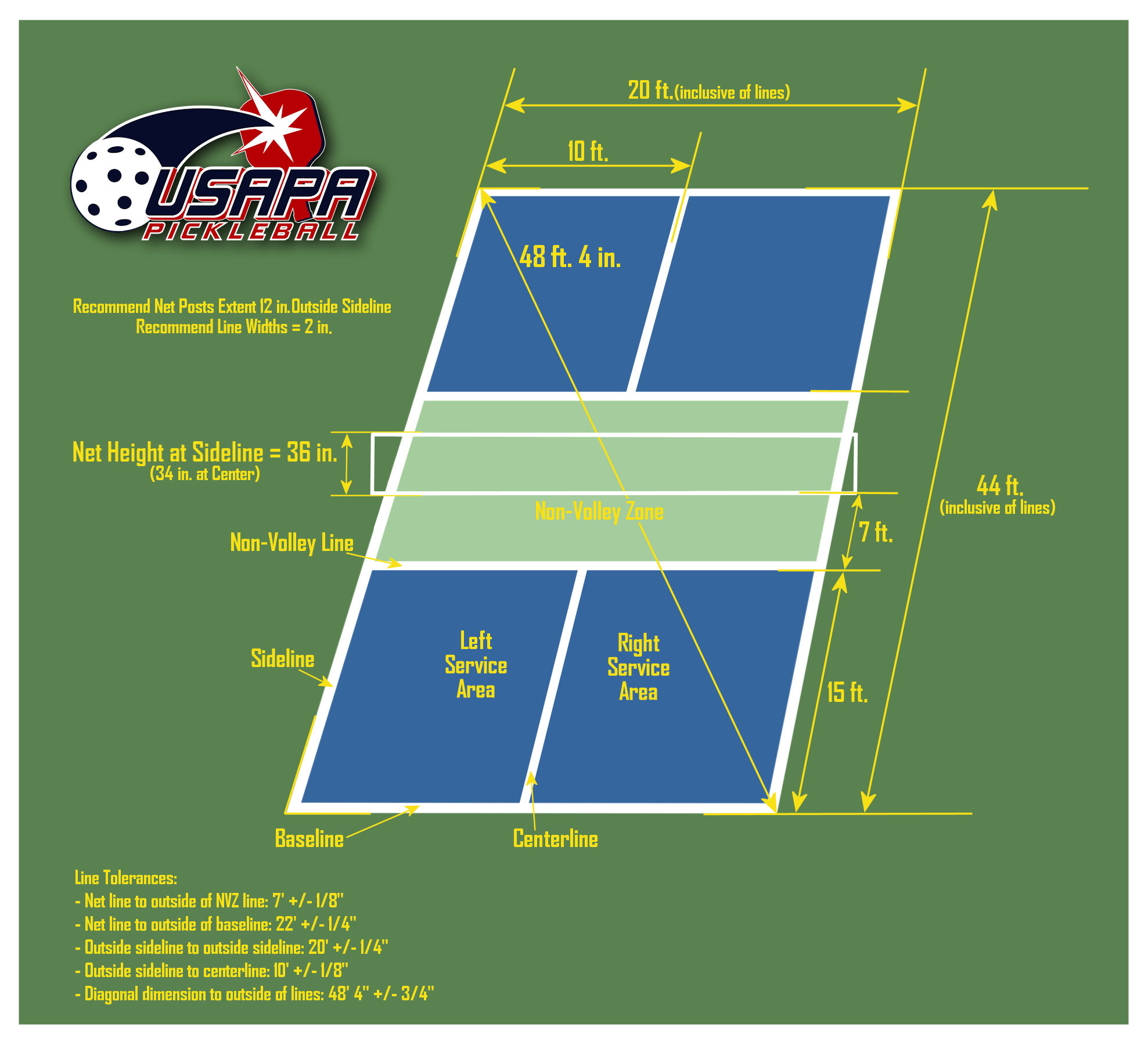Trick Consider the Building And Construction of Pickleball Courts: From Site Choice to Final Surfaces
The building and construction of pickleball courts incorporates a range of important variables, beginning with the option of a proper website that stabilizes availability with ecological factors to consider. Essential aspects such as court measurements, surface materials, and water drainage systems significantly impact not only the high quality of play yet additionally the durability of the center. Attention to lighting and completing touches can boost the overall experience for gamers and viewers alike. Recognizing how each of these elements interrelates may reveal understandings that are commonly neglected, prompting a better examination of best techniques in court building.
Site Selection Criteria
When starting the building and construction of pickleball courts, it is important to pin down the website choice standards that will certainly make sure optimal playability and accessibility. The location has to be quickly obtainable for gamers, ideally located near houses or community facilities, to urge involvement.
Furthermore, the terrain ought to be degree and secure, as irregular ground can cause security threats and impact gameplay. Appropriate drain is also critical; choosing a site with good water runoff will assist preserve court conditions throughout negative weather.
An additional essential consideration is the availability of energies. Access to electrical power and water is essential for illumination and upkeep objectives. Additionally, proximity to car parking centers is crucial, helping with very easy access for players and spectators alike.
Environmental variables can not be overlooked; natural shade from trees can improve gamer comfort, while exposure to dominating winds may interfere with play. Last but not least, zoning laws and neighborhood support should be taken into consideration to make sure that the task straightens with regional guidelines and gets the backing it requires for effective application. By thoroughly evaluating these criteria, stakeholders can develop an inviting and useful atmosphere for pickleball enthusiasts.
Court Dimensions and Design
To make sure optimum gameplay and adherence to laws, the dimensions and design of pickleball courts should be very carefully defined. A basic pickleball court gauges 20 feet in size and 44 feet in length for both songs and increases play. The advised layout consists of a non-volley zone, typically described as the "kitchen," expanding 7 feet from the net on either side. This area is critical, as it influences player positioning and shot choice - Illinois and midwest.
The web height is set at 36 inches at the sidelines and 34 inches at the center, producing a small dip that affects ball trajectory. Court markings are just as essential; lines should be 2 inches broad and distinct in color to make sure presence.
Additionally, a barrier area surrounding the court is suggested, generally prolonging 5 to 10 feet past the sidelines and baselines to suit players' motions and improve security. Correct layout and dimensions not just guarantee compliance with main guidelines but additionally boost the general playing experience, accommodating both entertainment and affordable play. Careful planning in these areas is vital to the successful building and construction of pickleball courts.
Surface Product Options
Selecting the appropriate surface area product for pickleball courts is crucial for making certain ideal gamer performance and security. The selection of surface area can significantly affect gameplay, including sphere bounce, traction, and player convenience.
There are a number of options readily available, each with its distinct characteristics. Asphalt is a preferred choice due to its toughness and reduced maintenance needs. It supplies a solid having fun surface that can hold up against different climate condition yet may need periodic resurfacing.
Concrete is an additional widely used product, offering excellent long life and a smooth finish. It allows for constant sphere bounce but can be difficult on players' joints, making it less preferable for long-term play without correct padding.
For those seeking improved comfort and shock absorption, cushioned acrylic surface areas present a sensible option. These surfaces combine a base layer with an acrylic overcoat, providing improved grip and a softer feel, which is beneficial for minimizing the danger of injuries.
Finally, synthetic grass is acquiring traction, specifically for multi-purpose centers. Its adaptability and reduced upkeep requires make it an attractive anonymous option, though it might not offer the very same round feedback as conventional hard courts. Cautious consideration of these alternatives will ensure an optimum playing atmosphere.
Water Drainage and Lighting Considerations
Proper drain and effective illumination are essential elements in the building of pickleball courts, substantially influencing both playability and safety and security. Ample drainage systems protect against water build-up, which can lead to unsafe surfaces and damages to the court structure.
Lights is equally essential, specifically for courts meant for night usage. Correct lighting enhances exposure, ensuring that players can see the sphere clearly and reducing the danger of crashes. The placement of illumination fixtures ought to be sites tactically prepared to remove shadows and provide even circulation of light throughout the court. LED lights are recommended for their power performance and long life, providing bright lighting while minimizing operational expenses.

Final Finishes and Upkeep
After dealing with drainage and lighting considerations, focus turns to the last surfaces and ongoing maintenance of pickleball courts. Illinois and midwest. The option of surface product is important, as it influences both playability and durability. Common options include acrylic finishings and specialized sports surface areas that offer optimal grip and cushioning. These surfaces must be used in several layers to guarantee resilience versus climate aspects and use.

Seasonal maintenance could include resurfacing every couple of years, depending on use and environmental elements. Properly maintaining nets, court lines, and bordering locations is equally important to provide a secure and delightful playing experience. By investing in high quality finishes and sticking to an organized upkeep routine, click site center proprietors can ensure their pickleball courts stay in excellent problem for years to come.
Final Thought
In conclusion, the effective building of pickleball courts pivots on thorough attention to several key elements. High quality surfaces and a durable maintenance timetable are important for preserving the court's condition, enhancing the general experience for players and spectators alike.